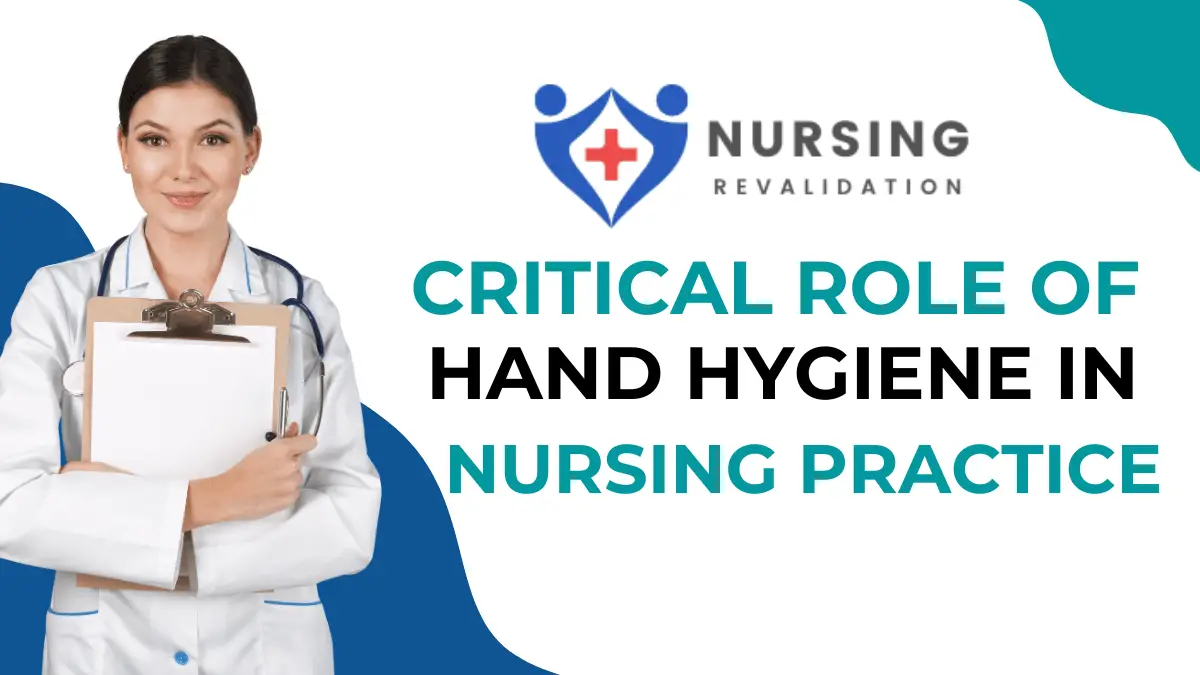In the intricate tapestry of healthcare, hand hygiene stands as a cornerstone of infection control, particularly within the purview of nursing practice. As frontline caregivers, nurses play a pivotal role in safeguarding patient health by adhering to stringent hand hygiene protocols. This article delves into the paramount importance of hand hygiene in nursing practice, elucidating its multifaceted significance and providing actionable insights for enhancing patient care and safety.
Understanding Hand Hygiene: Fundamentals and Significance
The Basics of Hand Hygiene
Hand hygiene encompasses the meticulous cleansing of hands to eliminate microorganisms, including bacteria, viruses, and fungi. It involves two primary methods: handwashing with soap and water and hand sanitization using alcohol-based rubs. While seemingly simple, these practices hold profound implications for preventing healthcare-associated infections (HAIs) and safeguarding patient well-being.
The Significance in Nursing Practice
In the dynamic realm of nursing, where patient interactions are frequent and intimate, the significance of hand hygiene cannot be overstated. Nurses serve as conduits for potential pathogens, necessitating scrupulous adherence to hand hygiene protocols to mitigate transmission risks. Failure to uphold stringent hand hygiene standards can precipitate adverse outcomes, including nosocomial infections, compromised patient safety, and increased healthcare costs.
Table: Hand Hygiene Compliance Rates Across Different Healthcare Settings
| Healthcare Setting | Hand Hygiene Compliance Rate (%) |
|---|---|
| Hospitals | 70 |
| Long-term Care Facilities | 50 |
| Ambulatory Care Centers | 60 |
The Impact of Hand Hygiene on Patient Outcomes
Reducing Healthcare-Associated Infections
HAIs pose a formidable challenge within healthcare settings, exerting a significant toll on patient morbidity and mortality. Hand hygiene serves as a linchpin in HAI prevention efforts, offering a cost-effective and empirically validated strategy for curbing transmission rates. By diligently cleansing their hands before and after patient contact, nurses fortify the first line of defense against nosocomial pathogens, thereby mitigating the risk of infection dissemination.
Enhancing Patient Safety
Central to the ethos of nursing practice is the unwavering commitment to patient safety. Hand hygiene acts as a cornerstone in this endeavor, serving as a fundamental tenet of quality care delivery. By adhering to rigorous hand hygiene protocols, nurses not only mitigate infection risks but also cultivate an environment conducive to patient well-being and recovery. This proactive approach underscores the proactive ethos of nursing, prioritizing preventive measures to avert adverse outcomes.
The Role of Education and Training in Promoting Hand Hygiene Compliance
Empowering Nurses Through Education
Education lies at the heart of fostering a culture of hand hygiene excellence within nursing practice. By imparting comprehensive training on hand hygiene protocols, healthcare institutions equip nurses with the knowledge and skills necessary to uphold impeccable standards of cleanliness. Educational initiatives should encompass didactic instruction, hands-on training, and ongoing reinforcement to ensure sustained compliance and efficacy.
Harnessing Technology for Training
In the digital age, technology emerges as a potent ally in augmenting hand hygiene education and training initiatives. Simulation-based learning platforms offer immersive experiences, allowing nurses to practice and refine their hand hygiene techniques in a risk-free virtual environment. Additionally, mobile applications and e-learning modules provide accessible resources for continuous professional development, empowering nurses to stay abreast of the latest guidelines and best practices.
Strategies for Enhancing Hand Hygiene Compliance Among Nurses
Creating a Culture of Accountability
Cultivating a culture of accountability is paramount in promoting hand hygiene compliance among nurses. Healthcare leaders must foster a supportive environment where adherence to hand hygiene protocols is viewed as non-negotiable. Implementing robust monitoring systems, providing timely feedback, and recognizing exemplary adherence are instrumental in reinforcing desired behaviors and fostering a sense of collective responsibility.
Facilitating Accessibility to Hand Hygiene Resources
Accessibility plays a pivotal role in facilitating hand hygiene compliance among nurses. Healthcare facilities should ensure ready availability of hand hygiene resources, including soap, water, alcohol-based rubs, and personal protective equipment (PPE). Strategic placement of hand hygiene stations in high-traffic areas and provision of conveniently located supplies empower nurses to adhere to protocols seamlessly, without impeding workflow efficiency.
Conclusion
In summary, hand hygiene stands as an indispensable cornerstone of nursing practice, exerting a profound impact on patient outcomes and healthcare quality. By prioritizing meticulous hand hygiene adherence, nurses assume a pivotal role in mitigating infection risks, enhancing patient safety, and upholding the tenets of quality care delivery. Through continuous education, training, and strategic interventions, healthcare institutions can fortify hand hygiene compliance among nurses, fostering a culture of excellence and accountability. As guardians of patient well-being, nurses wield the power to effect tangible change through the simple yet transformative act of hand hygiene.


